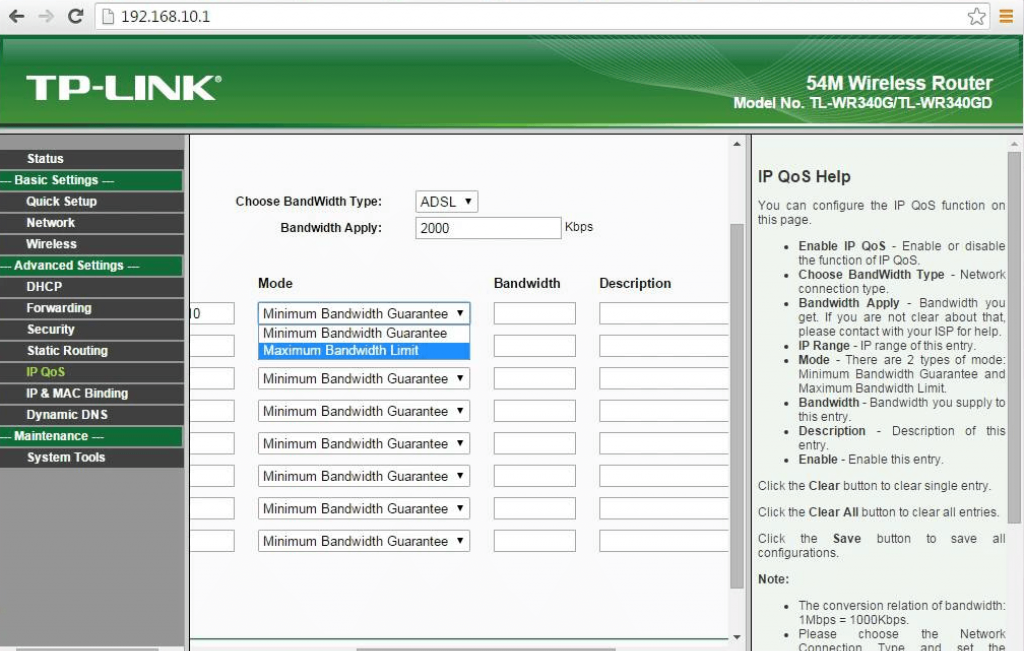
- Can i control bandwidth for individual mac adressses how to#
- Can i control bandwidth for individual mac adressses android#
Can i control bandwidth for individual mac adressses android#
You can’t just use a single method, as you could have Windows PCs, Macs, Android phones, iPhones and iPads, game consoles, smart TVs, and set-top streaming boxes all connected to your home router. This is more complicated than it seems, too. If you can’t actually capture or view this information on your router, you’re left relying on bandwidth-monitoring tools built into each device itself. This information must be captured on your router itself. There’s no magic way to run a tool that somehow monitors all the traffic on your network without your router’s help.

OpenWRT users can use luci-wrtbwmon, which makes things a little simpler. It’s no longer under active development, but the author recommends a few forks of the Tomato router firmware that include features based on it. However, this script writes this information to a database which means you need to provide a separate database it can connect to over the network to log this information - it can’t do all the work on the router itself. There’s a wrtbwmon script designed for routers running Linux-based firmwares like DD-WRT, OpenWRT, and Tomato. It can also enforce quotas on specific devices to prevent them from downloading and uploading too much data. There’s also Gargoyle, an OpenWRT-based router firmware designed specifically for bandwidth and data usage monitoring. For example, Buffalo offers routers that come with DD-WRT preinstalled, while Asus touts DD-WRT compatibility for their line of routers. Getting a DD-WRT router so you can use this feature isn’t as hard as it might sound. Monitoring data usage over an extended period of time is harder. The My Page add-on for DD-WRT does this well, although it will require additional storage on your router to continue logging all this data over time - a device plugged into USB storage, for example. This will let you pinpoint any devices hogging bandwidth at that very moment. Router firmwares like DD-WRT offer the ability to see live bandwidth usage, and you can check which devices are currently using the most data.

Instead, you’ll need to depend on third-party router firmwares for this. Some higher-end routers do offer the ability to keep track of how much data you’ve uploaded and downloaded each month, but they don’t necessarily offer per-device bandwidth status-viewing or a per-device data usage history. This isn’t as easy as it should be. Most home routers don’t even include the ability to see which devices are using which amount of bandwidth at the moment, much less a history of how much data they’ve downloaded and uploaded this month. All the devices on your network connect to the Internet through your router, so this is the single point where bandwidth usage and data transfers can be monitored and logged. The most accurate way to monitor this would be on your router itself.
Can i control bandwidth for individual mac adressses how to#
RELATED: How to Use a Custom Firmware on Your Router and Why You Might Want To

Monitor Bandwidth and Data Usage on Your Router


 0 kommentar(er)
0 kommentar(er)
